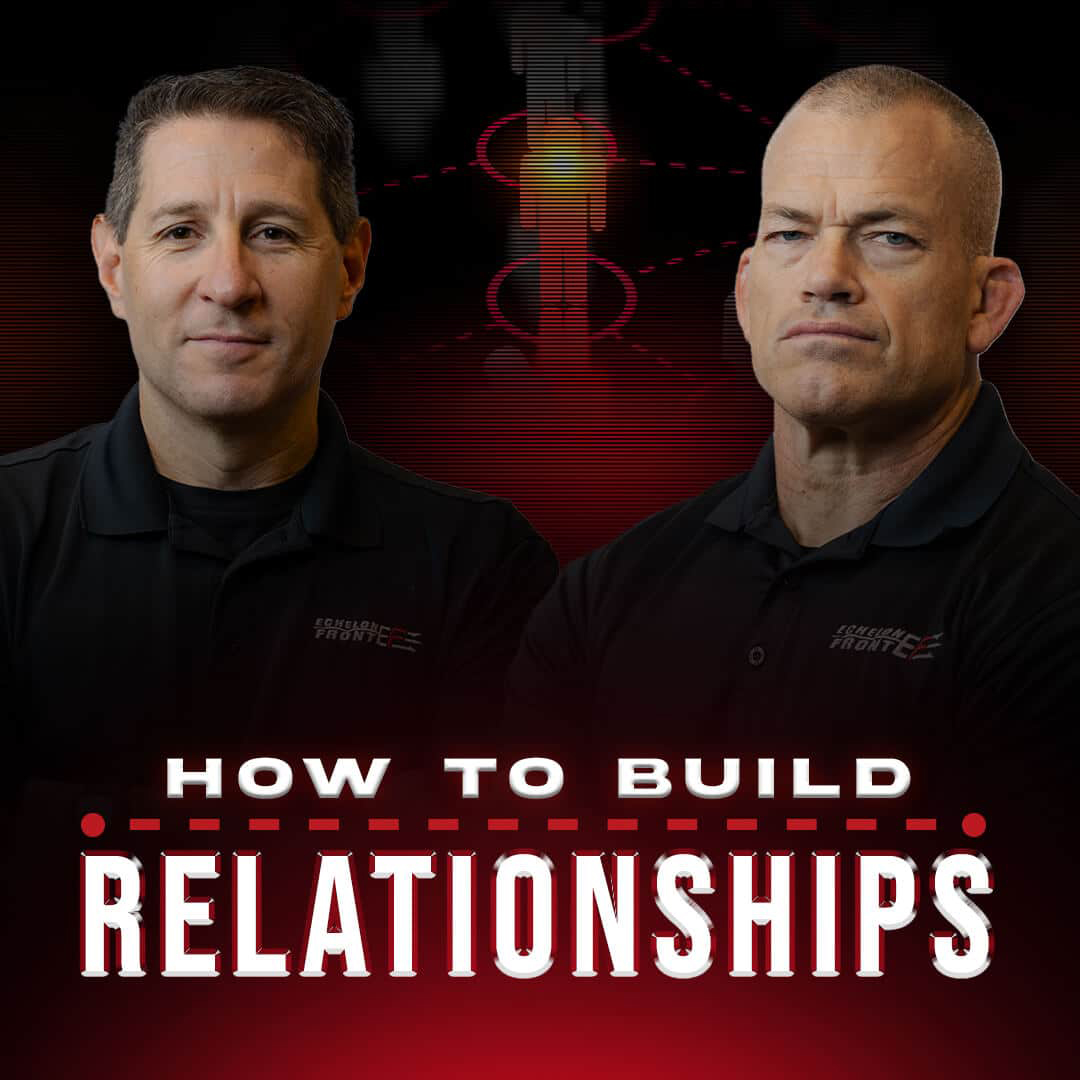Boundaries are an ever-increasingly popular method of handling the difficult interactions that humans have with one another throughout their lives at work and personal lives. Knowing how to set boundaries can become quite a challenge. As defined in the first article of this series, a boundary is an immovable barrier between a person and something from which they want to be protected. This definition allows for the fact that some boundaries are necessary, in particular boundaries around things that are illegal, unethical, or immoral. Quite often, however, boundaries get put into place too readily and unnecessarily. This is because of a variety of human tendencies, including making excuses, taking the easy path, short-term thinking, and following our emotions. Such tendencies also produce the tendency to create boundaries. However, as also previously mentioned, there are repercussions to boundaries, even the ones that are accurately set. They can damage relationships. They can allow your ego to drive your decisions. They can prevent improvement.
This then begs the questions: What is the optimal way to determine a boundary? How to set a boundary and when is it actually necessary? Below, we discuss the Extreme Ownership approach on how to set boundaries.
Instead of Boundaries, We Need Priorities and Alignment
It is certainly true that there are many situations and interactions in life in which, ideally, certain actions would not be performed. And, we often try to ensure that those actions will not be performed by knowing how to set a boundary. However, the truth of the situation is that the vast majority of boundaries that we set should not be and are not truly concrete.
For example, one of the most common boundaries is not taking work calls outside of work hours. At face value, you can look at this as an example of how to set healthy boundaries. This is a boundary that many leaders will set in order to try to strike the proper work-life balance and to help their team learn to lead. These are both admirable goals; however, the fact is that there are times when we have to forego both of those goals for the sake of the mission. If you are a plant manager, and you are off work, but the team encounters a catastrophic problem that they can’t solve, you would certainly want to make an exception to your “no work calls outside of work” boundary so that you can do what you can to help.
Thus, true boundaries and what we often create and call “boundaries” are not one and the same. A true boundary is something that must never be violated. Things that are illegal, unethical, or immoral. Most other “boundaries” are discretionary. You will tend to adhere to them, but in certain situations, they should be bypassed. Ultimately, it’s important for you to know how to set boundaries and decide under which circumstances boundaries are applicable.
The proper approach, then, for these discretionary circumstances should be to combine the third Law of Combat, Prioritize and Execute, with the concept of alignment.
- Prioritize and Execute means focusing your resources on the task that will have the greatest impact on the mission. As a leader, it is your responsibility to ensure that you and the team are all aware of the appropriate priority to work on at any given time.
- Alignment is about each team member coordinating their priorities and efforts toward a common strategic goal.
Thus, this applies in this context in that instead of a “boundary,” what we need within our team is alignment on our priorities at any given time and in certain situations. This alignment will allow you the flexibility to make the discretionary choice to shift your priorities such that you take actions that you typically would prefer not to have to take.
Application Example
To visualize this, let’s revisit the catastrophic plant issue situation from earlier. On a typical day, your priorities as the plant manager might be as follows: first, ensure that the plant stays operational. Second, you are teaching your team to lead by empowering them to make decisions about the operation of the plant without you being present. This allows you to focus on your work-life balance by spending uninterrupted time with your family.
Now, when the team encounters a problem that they can’t solve that would result in the plant shutting down, if you have a boundary about not accepting work calls outside of work, then you ignore their calls or maybe they don’t even call you because they know this is a boundary for you. When you ignore their calls or never receive a call, you can’t help them, and they can’t handle the problem, the plant shuts down, resulting in failure. Not only do you have mission failure, but now the relationship between you and the team is damaged because you didn’t help them when they needed you to. Trust is broken. The team hasn’t learned anything and is likely to lose confidence.
On the other hand, if you are aligned with your team on the priorities, the situation will turn out differently. When the team runs into a problem, they know that you all agree that the top priority is for the plant to stay operational. They also know that they need to develop their abilities, and that involves handling problems on their own whenever possible. Thus, when the team encounters a problem that they are capable of solving, they will not need to call you, and your phone doesn’t ring during family time. However, if the team encounters a problem that they cannot solve, they know that they can call you for support, and you know that they would only call if there were a major issue at the plant, so you can make the discretionary decision to answer the call even though you’d rather be able to have uninterrupted family time. Additionally, the relationship between you and the team is preserved. The team can learn how to handle this situation in the future. They gain confidence. Then, even better, the number of circumstances for which they would need to contact you is subsequently reduced.
This concept also mitigates one of the biggest issues with knowing how to set boundaries, and that is that once we start building them, more and more will be constructed until simply remembering them all becomes next to impossible. Especially, when each member of the team has to remember all of the boundaries of every other member of the team. However, when you and your team step back and think broadly about what the priorities of the team are, then the need for boundaries is almost eliminated, as most interactions between individuals on the team can be adjusted based on our priorities.
A New Term: Guidelines
Given that the term boundary must be reserved as an immovable barrier, it behooves us to have a term that is simpler than “Prioritize and Execute plus Alignment.” Thus, given that priorities shift, and we can discretionally decide to prioritize something higher in certain situations when otherwise we wouldn’t, perhaps a better term to describe this concept more accurately would be “Guidelines.” A Guideline is an indication of a future course of action. A line that suggests a proper decision but leaves open the possibility that it should be bypassed. It can be moved. It can be stepped over as the need arises.
Examples: The Switch from Boundary to Guidelines
Contact outside of working hours
Boundary: “I will not answer any calls outside of work.”
- Possible Repercussions: The team runs into a problem they can’t solve on their own, causing either mission failure, a big setback, or loss of opportunity. Trust is eroded between you and the team. The relationship is damaged. The team hasn’t learned anything.
Guideline: “The team knows my priority is for them to learn to lead without me, but also a higher priority is accomplishing the mission. So, if they call outside of work hours, I should answer because it must be an emergency.”
- Benefits: You can ensure that the mission gets accomplished. The team is reinforced in their belief that you care about them and they can trust you. You can teach the team to handle this situation. You can debrief afterward to further clarify the Guideline for contact outside of work.
Gossiping
Boundary: “I will never allow anyone to gossip to me about others.”
- Possible Repercussions: You immediately shut down the conversation. The other person does not feel listened to. The relationship is damaged. You lose the opportunity to hear about possible issues within your team that you can support through leadership.
Guideline: “My priority is that I avoid allowing silos to develop in my team so that we can use effective teamwork. Usually, I will dissuade gossip, but If I hear it I can listen to it, ask earnest questions to mitigate it, and help to exemplify that we must work together and build relationships.”
- Benefits: The other person sees that you are listening to them. The relationship is improved. You gain influence. You can ask earnest questions that will ultimately help the person see that nobody benefits from gossip and that relationships and teamwork are paramount, further reducing gossip.”
Personal Life
Boundary: “I will only participate in social gatherings with work colleagues once per month.”
- Possible Repercussions: The team has a big win and want to go out to celebrate. But, since you already went out with them once this month, you decline. This disappoints the team. They go out, and bond without you, leaving you the odd person out. While the relationship might still be ok, you have missed an opportunity to make it even stronger.
Guideline: “I usually will keep work and life separate by only going out with my team once a month, but if there is a special occasion, I can make an exception.”
- Benefits: The team knows you don’t usually go out much. When you make the exception, they feel respected, cared about, and that they have influenced you. In turn, they will give these components of the relationship back. You leave the interaction having lost little but having gained an even stronger relationship with the team.
Build Relationships, Not Boundaries
One of the most challenging aspects of Prioritizing and Executing in complex situations is that priorities are continuously changing. Just like any aspect of leadership, continuous coaching will be required to ensure that everyone stays aligned on our priorities.
One tool that will help with this, and indeed aids in every part of leadership, is relationships. The better relationships we have with our team and that our team has with each other, the easier it will be to gain alignment and work through shifting priorities.
Conclusion: Instead of Employing Boundaries, Employ Leadership
Navigating the multitude of interactions and situations one might face at work and in life is challenging, to say the least. Considering the challenging nature, it may be your first instinct to place a boundary between you and that problem. Ultimately, however, doing so will not solve the underlying problem and will only result in more difficulty and bigger problems. So, before you go to place a boundary, ask yourself: Does this boundary support the team? Are we all aligned on our priorities? If not, how can I correct that? Am I detached from my ego? How can I empower others to lead so that I do not have to create a boundary? Do I really NEED a boundary? Do I know how to set healthy boundaries?In the vast majority of situations, if we answer these questions honestly, we will realize that instead of a Boundary, all we really need is Guidelines and Leadership.




